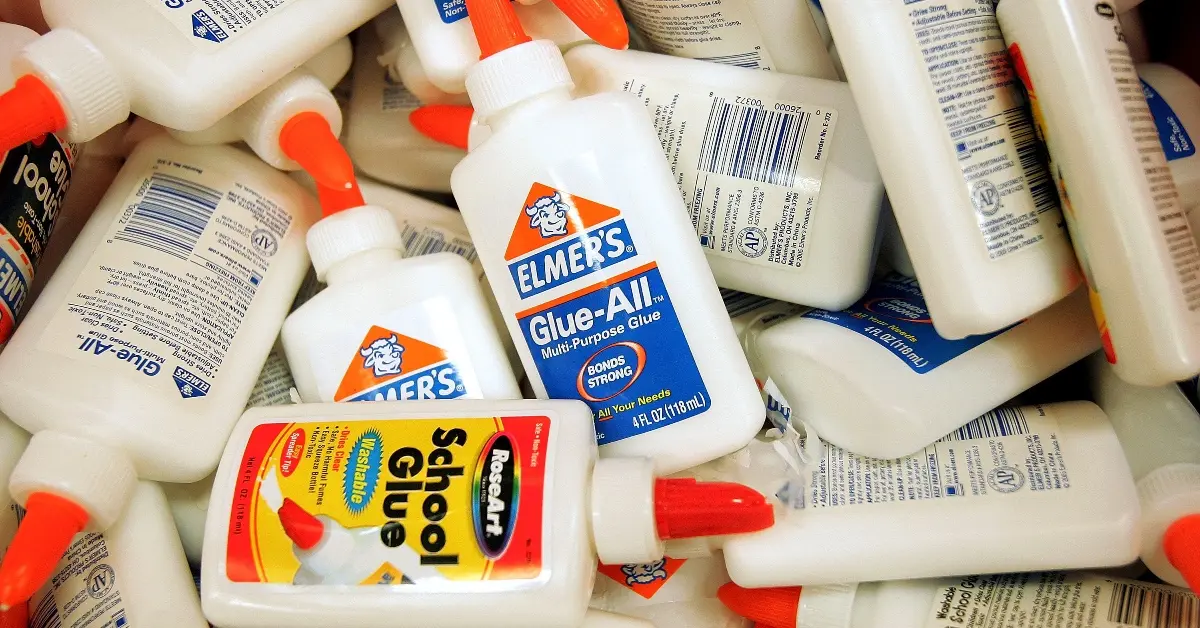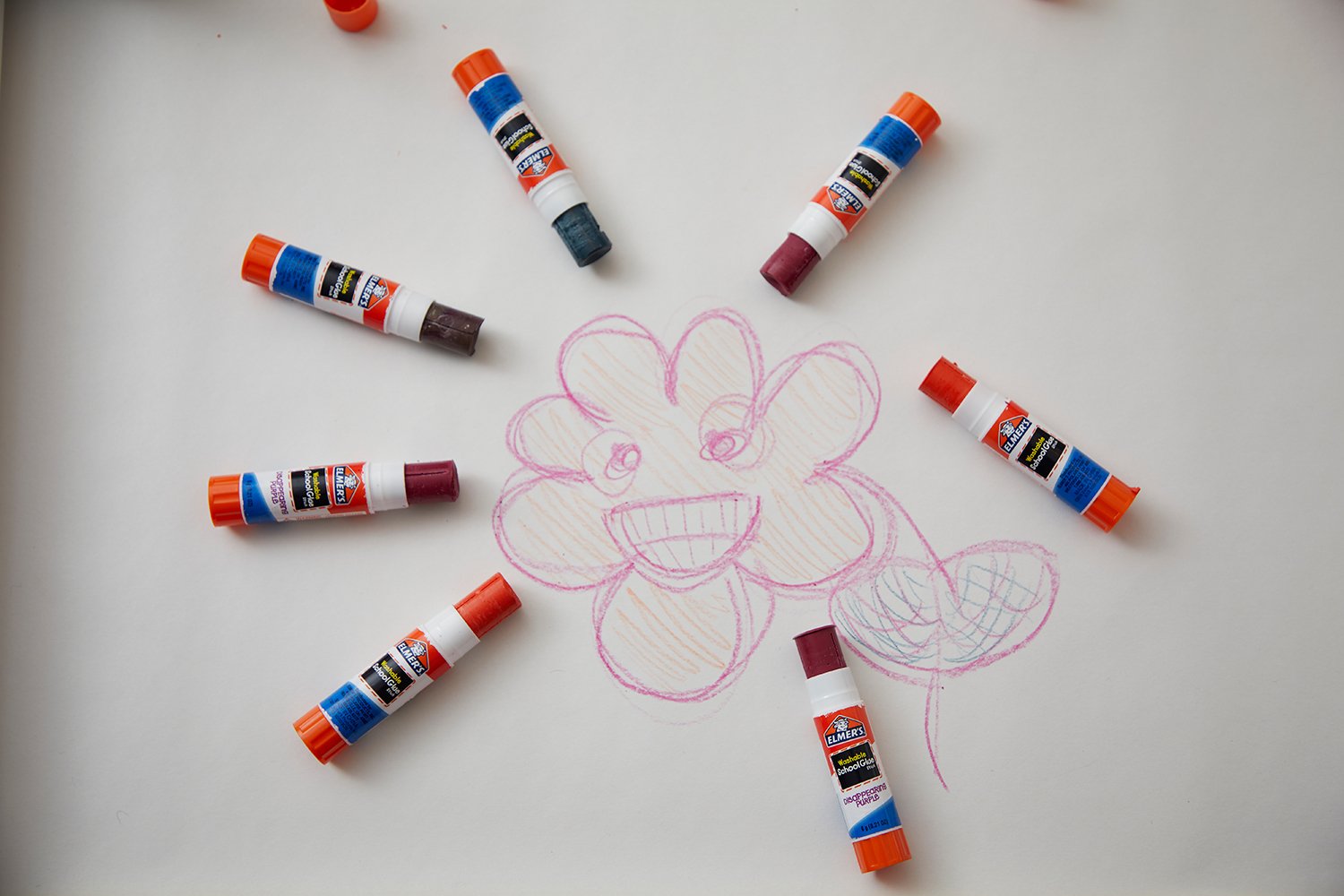Glue is an essential household and industrial product, but some question its sustainability.
Different types of glue have varying environmental impacts depending on their ingredients, toxicity, and biodegradability.
This article explores whether common glues like Elmer’s and hot melt adhesives harm the environment.
Is Glue Bad for the Environment?

For most common glues like Elmer’s and hot melt, normal usage, and disposal have minimal negative impacts on the environment.
However, some industrial adhesives contain toxic ingredients that can pollute ecosystems if released in large quantities.
Key Points
- Water-based white glues readily biodegrade and pose little toxicity risk.
- Hot melt glues are recyclable and use no hazardous solvents.
- Certain epoxies and superglues may persist longer and leach chemicals.
How Do Glues Impact the Environment During Production?
Glue production has some environmental considerations such as energy, water use, and waste.
However, many common glue types like solid hot melt and white school glue are water-based formulas requiring minimal processing.
Elmer’s glue is 90 percent water.
Hot melt glues use no solvents.
Some superglues and epoxies contain toxic ingredients, but many brands now use modified less hazardous chemicals.
Overall, responsible manufacturing minimizes glue’s production impacts.
What Happens When Glue Ends Up in Landfills?
Standard white school and craft glues biodegrade relatively quickly compared to plastics.
Elmer’s glue contains polyvinyl acetate polymers that break down through exposure to light, air, and bacterial digestion.
However, some superglues resist biodegradation.
And glues with toxic ingredients like solvents could leach chemicals.
Hot melt glues made from plastics may persist longer if not recycled.
But responsible use and disposal of small glue amounts pose little ecological threat.
Can Glue Cause Pollution if Released into the Environment?
In nature, white school glue would have negligible environmental effects beyond possible local oxygen depletion as it decomposed.
However, industrial glues and adhesives contain a wide array of chemicals.
Some ingredients like formaldehyde resins and methylene diphenyl diisocyanate can be toxic if released in large volumes.
But most glue use, such as crafts or household repairs, involves tiny quantities unlikely to cause meaningful pollution if spilled or washed into soils and waterways.
Are Some Glues More Sustainable Than Others?
Yes, natural glues made from substances like starch, gum Arabic, gelatin, and beeswax have lower environmental impacts than synthetic formulations.
These bio-based adhesives come from renewable feedstocks and biodegrade readily.
However, natural glues may lack performance compared to synthetic versions optimized for certain applications.
Some acrylics, polyurethanes, and epoxies tout eco-friendly reformulations using greener chemicals, water, or non-oil-based plasticizers.
Evaluating tradeoffs between sustainability and performance for each use case is ideal.
Can Glue Be Recycled?

Most household glues cannot be recycled since they are used in small quantities.
However, hot melt adhesive companies have established recycling programs to recover production scrap and post-industrial waste for recycling.
The recycled adhesives are processed back into usable glue.
Some plastic bottle glues also offer recyclable packaging.
Consumers can participate by purchasing recyclable glues and reusing containers.
But the tiny amounts of glue most households use make collecting it unfeasible.
How Does Elmer’s Glue Impact the Environment?
As a water-based formula free of toxic chemicals, Elmer’s school glue has minimal negative environmental effects during production, use, and disposal.
Its biodegradable polyvinyl acetate formulation breaks down relatively quickly versus plastics.
The biggest impacts stem from energy and water use during manufacturing.
However, Elmer’s corporate parent Newell Brands has committed to 100% recyclable packaging and responsible materials sourcing to reduce ecological footprints.
Could Switching to Natural Glues Be More Sustainable?
In some applications, natural glues made from starch, cellulose, proteins, or gums can provide good adhesion while remaining non-toxic and biodegradable.
However, these alternatives require more resources to produce than their synthetic counterparts.
Natural glues may also have poorer moisture resistance without additives.
As with any adhesive, the user must weigh performance against sustainability to determine the optimal choice based on function and environment.
What Factors Should Consumers Consider When Buying Glue?
Consumers should evaluate a glue’s toxicity, longevity, performance for the intended use, recyclability of packaging, and whether eco-friendly alternatives exist.
Water-based school glues offer versatility and safety for classroom and home use.
Photodegradable or compostable glues are better for outdoor applications.
Superglues bond instantly but may persist for years upon disposal.
Finding the least toxic option that still provides adequate adhesion minimizes a glue’s environmental impact.
What Effects Does PVA Have on the Environment?
Polyvinyl acetate (PVA) glues like Elmer’s have minimal negative effects on the environment. PVA is water-based and non-toxic.
It biodegrades through bacterial digestion and exposure to light and air relatively quickly compared to plastics.
PVA glues pose little risk of leaching chemicals into ecosystems because vinyl acetate is converted into PVA soon after production.
One environmental benefit of PVA glues is their adhesion to porous materials like wood and paper, reducing the need for toxic formaldehyde glues.
Any steps in PVA production with potential ecological impacts are minimized through responsible manufacturing practices.
Overall, the tiny household usage of PVA school glues results in negligible environmental consequences.
Is PVA Glue Compostable?
PVA glue is considered compostable when fully dried into a solid film.
The polyvinyl acetate polymers will slowly break down through microbial and enzymatic activity in the compost pile.
However, PVA glues are designed not to decompose quickly, so the composting process will take somewhat longer compared to materials like food scraps.
Large volumes of glue should go to industrial composting facilities rather than backyard compost heaps to fully biodegrade.
But when used sparingly, dried PVA glue on projects like seed paper is safe to compost.
Overall, PVA glue’s compostability makes it an environmentally friendly choice.
How Long Does PVA Take to Biodegrade?
Polyvinyl acetate glues can take anywhere from weeks to years to fully biodegrade, depending on conditions.
The vinyl polymers slowly oxidize through exposure to light and air over time.
Bacteria and fungi also gradually metabolize the vinyl molecules through enzymatic hydrolysis.
PVA’s plasticizers make it more resistant to water and weathering.
But in landfills or composts, the estimated timeframe for complete PVA biodegradation is two months to five years when exposed to microorganisms, moisture, and heat.
So while not fast-acting, PVA glue does steadily break down in the environment.
What is the Best Environmentally Friendly Glue?
The most eco-friendly glues use renewable plant-based ingredients like starch, gum arabic, tree resin, beeswax, and cane sugar.
These natural adhesives biodegrade quickly and renewably without toxic chemicals.
However, natural glues may lack strength or water resistance.
Among synthetic glues, water-based PVAs and solid hot melt adhesives have the smallest environmental footprint.
Choosing recyclable or compostable packaging also helps.
Consumers should select the least toxic glue that provides enough durability and adhesion for the intended project.
Using the minimal amount needed further reduces any ecological impacts.
Key Takeaways:
- Glues vary in their potential environmental harm depending on composition and usage.
- But for most everyday applications, responsible use of water-based and hot melt glues has minimal ecological effects.
- Considering sustainability alongside performance can help consumers choose wisely.
FAQ
What Is Polyvinyl Acetate Glue?
Polyvinyl acetate is the primary component of white school glues like Elmer’s. It is a synthetic plastic polymer emulsion in water that forms flexible, fast-drying films safely.
How Do You Dispose of Glue?
Once dried fully, small amounts of white school glue can go in the regular trash. Larger quantities should be dried thoroughly and taken to a hazardous waste facility.
Are Natural Glues More Sustainable?
Glues made from starch, gum, or cellulose are compostable and non-toxic but may lack performance features. They offer a good eco-friendly option in some applications.
GreenChiCafe provides DIY ideas for sustainable crafting.
Visit our site to learn more about eco-friendly adhesives and materials.
